Abstract
Three pigeons were exposed to two-key discrete-trial concurrent schedules of reinforcement. Red and white key colors alternated irregularly and the assignment of reinforcers depended on key color. The red-key schedules were held constant, with the scheduled relative frequency of reinforcement for left-key pecks set at 0.75, while the white-key schedules varied. When the location of white-key reinforcement was changed from one side to the other, while its overall frequency was constant, red-key choices shifted in the same direction as white-key choices, an induction effect. When the overall frequency of white-key reinforcement was changed while its location remained constant, red key choices shifted in a direction opposite to white-key choices, a contrast effect. Both induction and contrast effects were clearer when the overall frequency of red-key reinforcement was reduced. These data demonstrate that the allocation of responding may exhibit schedule interaction effects similar to those commonly reported for response rate.
Keywords: behavioral contrast, induction, multiple schedules, concurrent schedules, choice, key peck, pigeons
Full text
PDF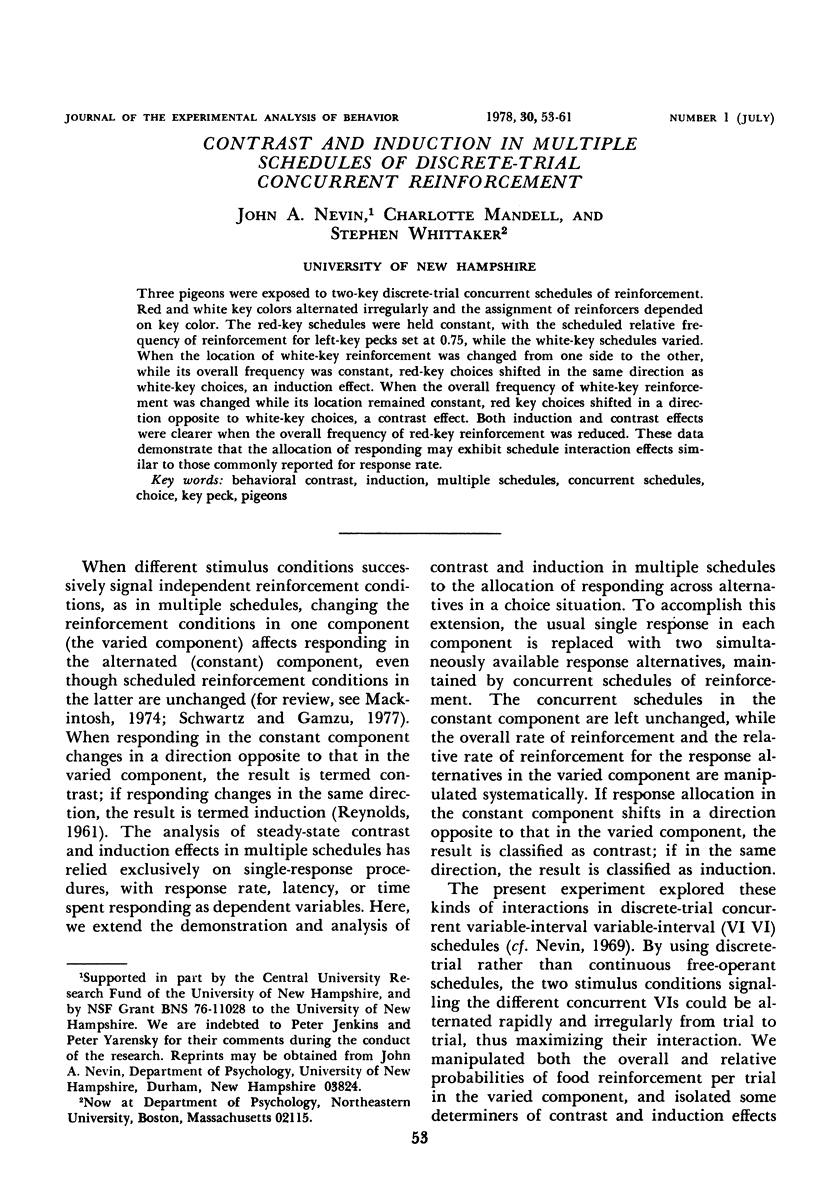
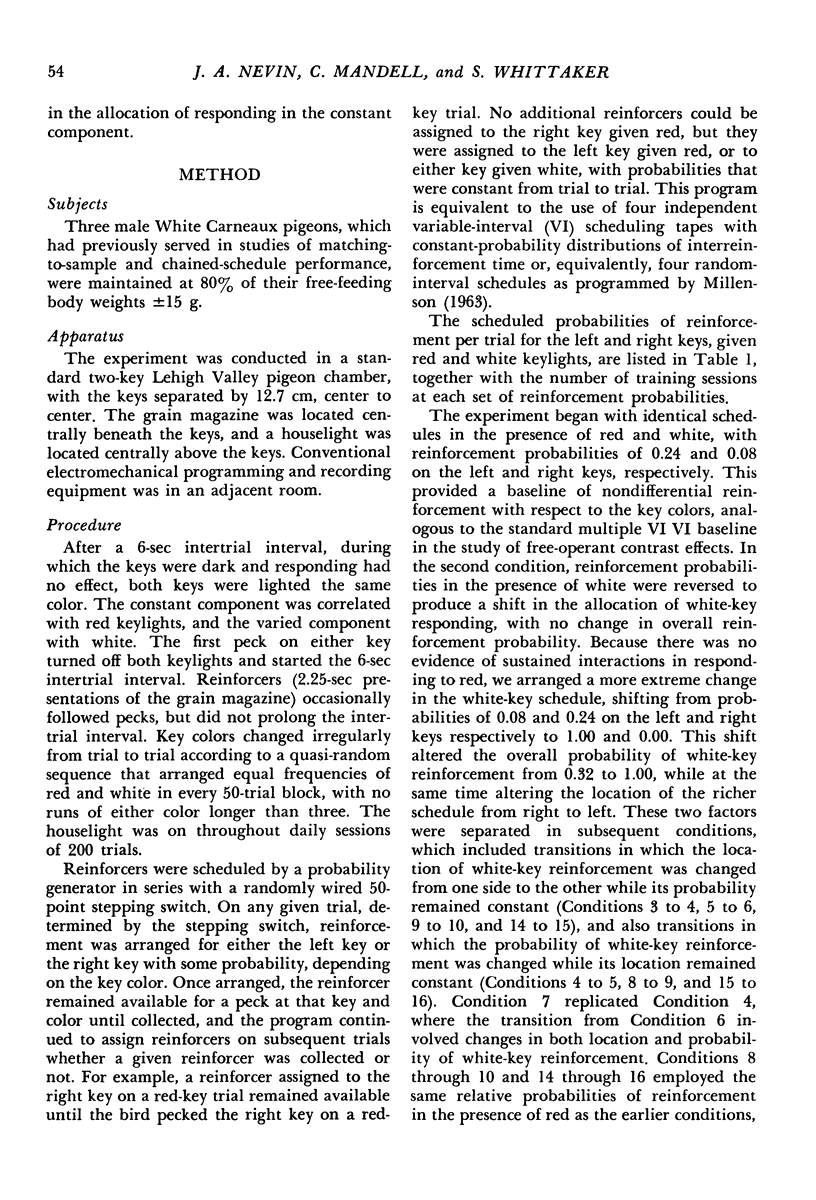
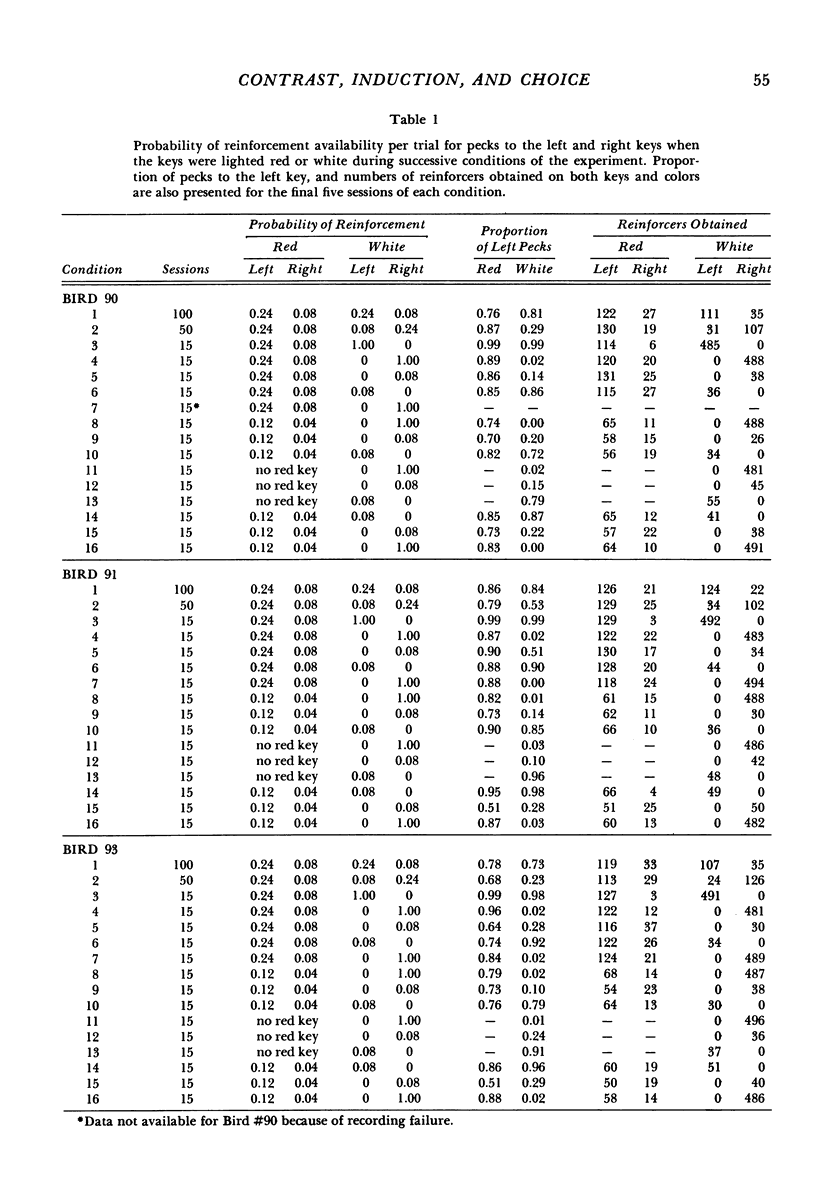
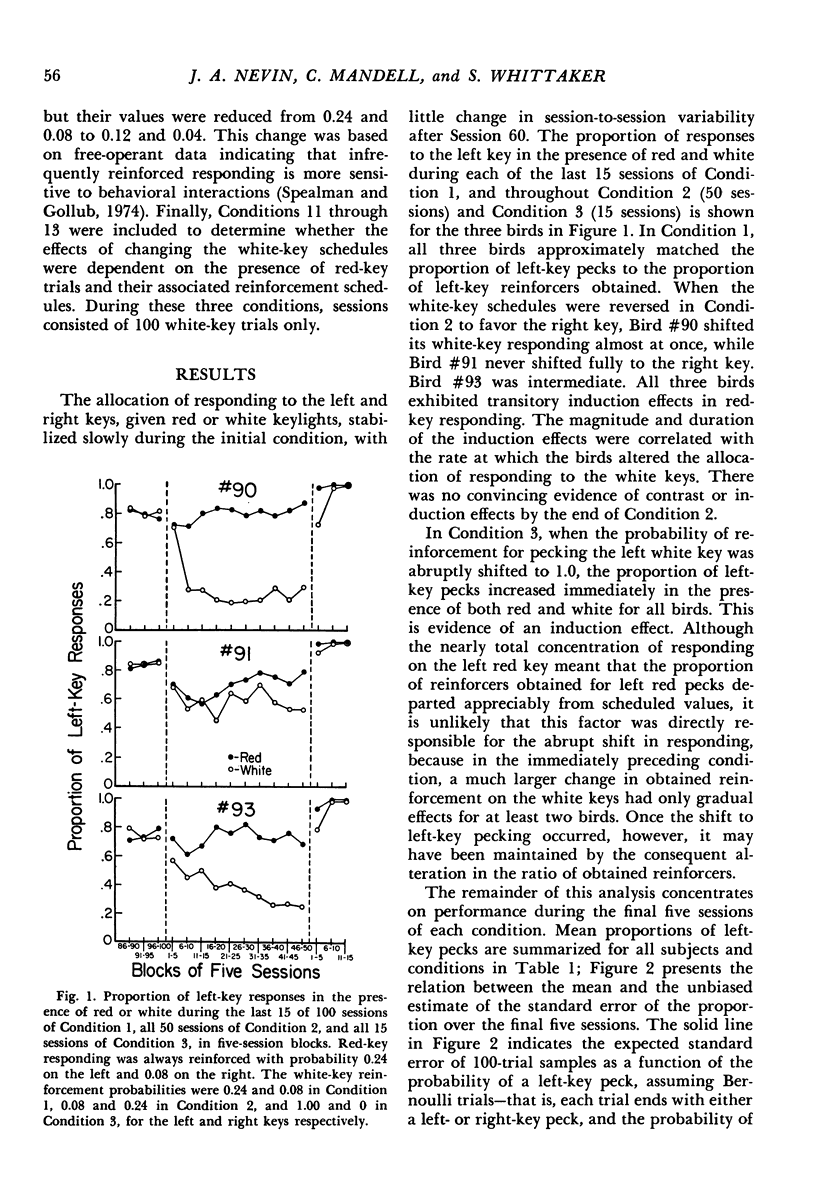
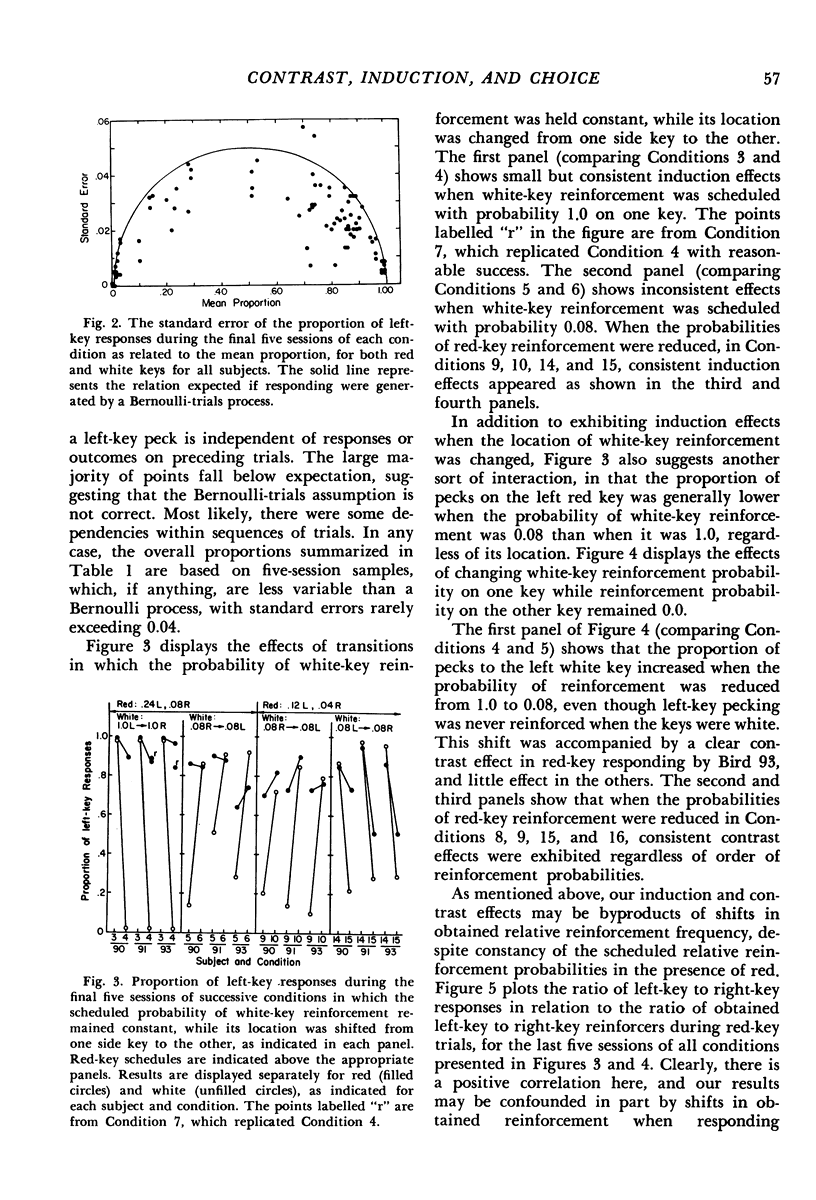
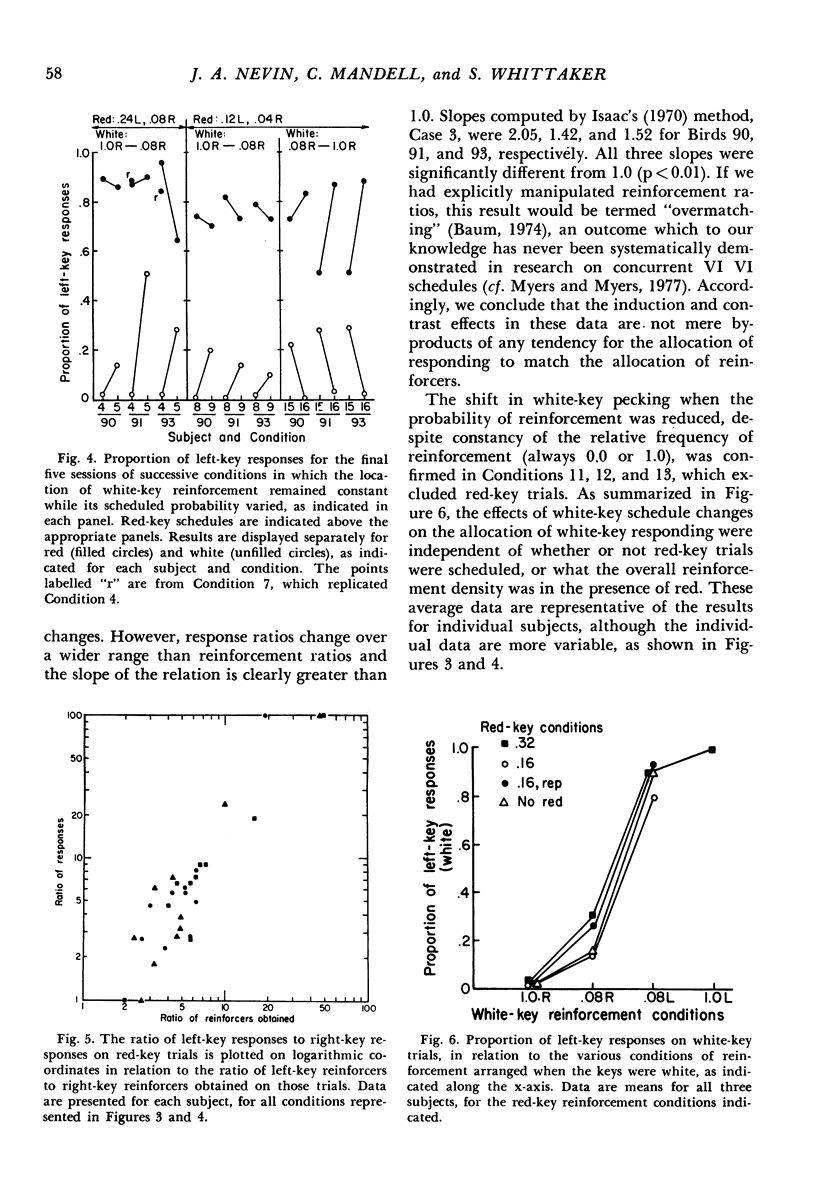
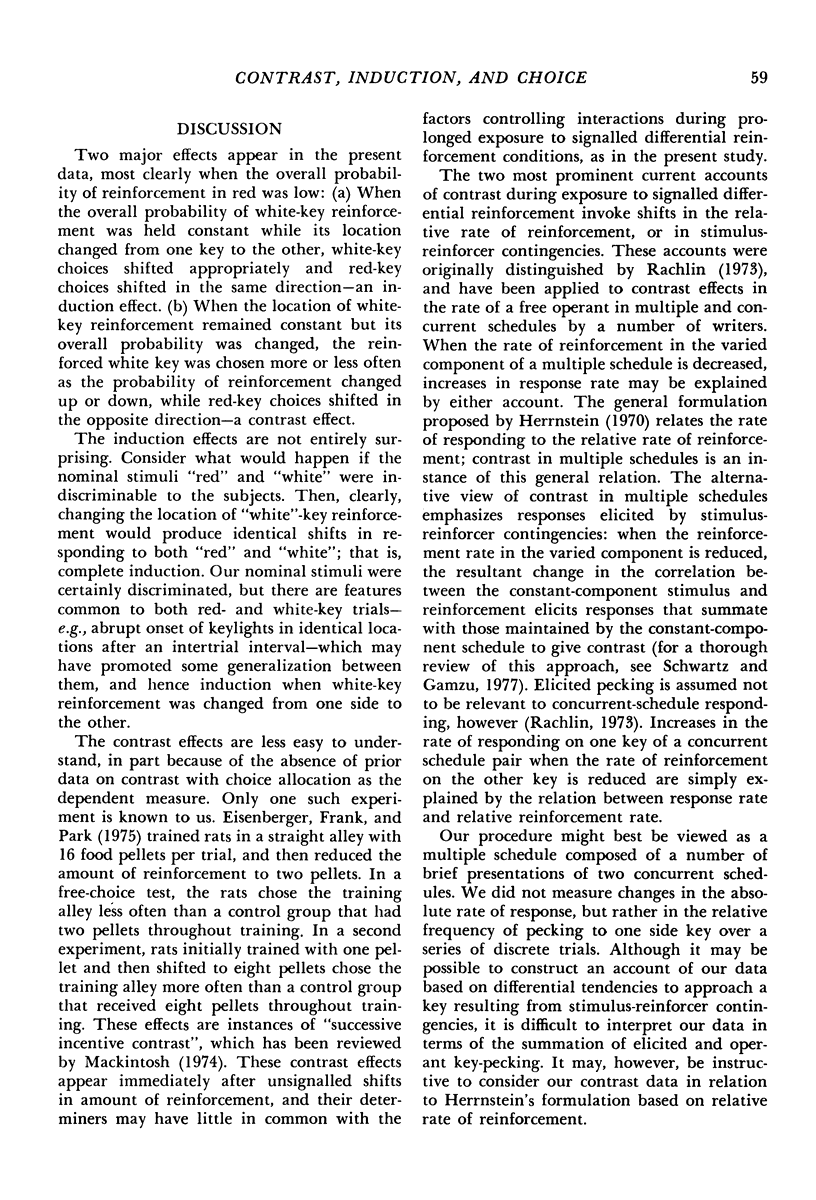
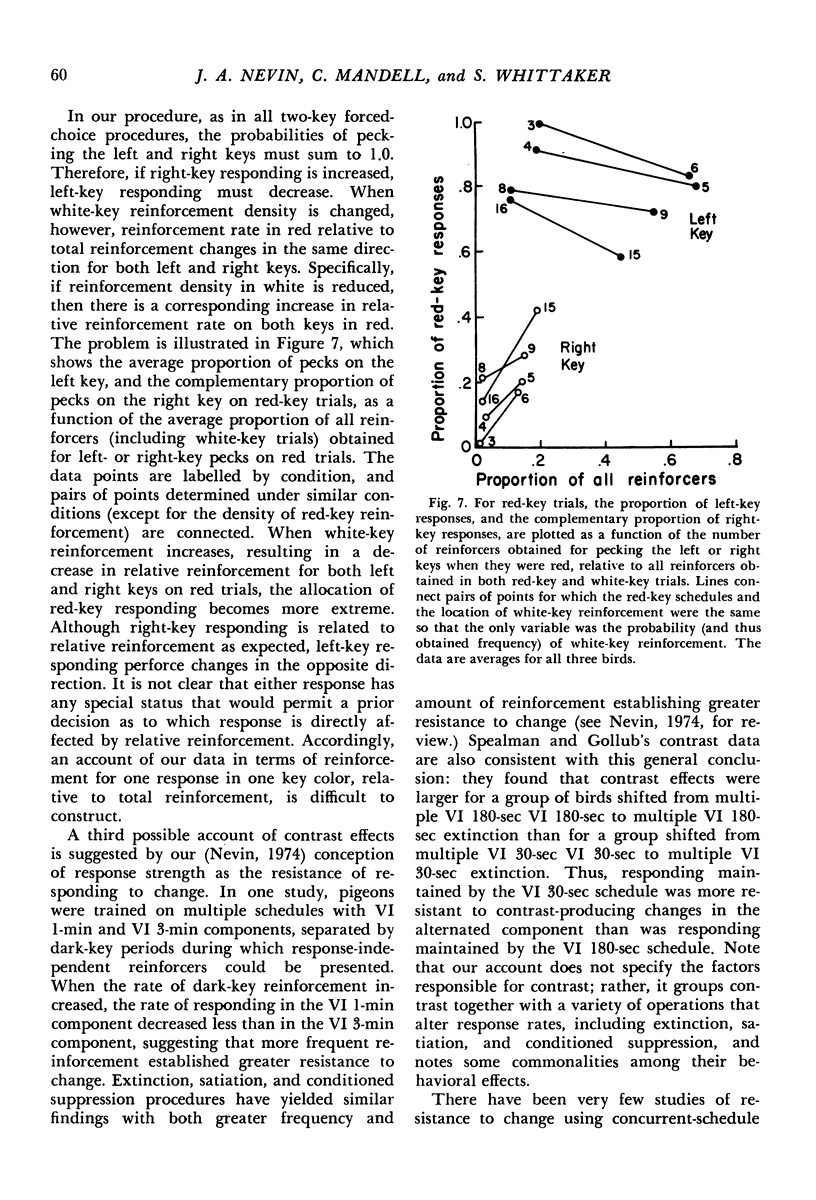
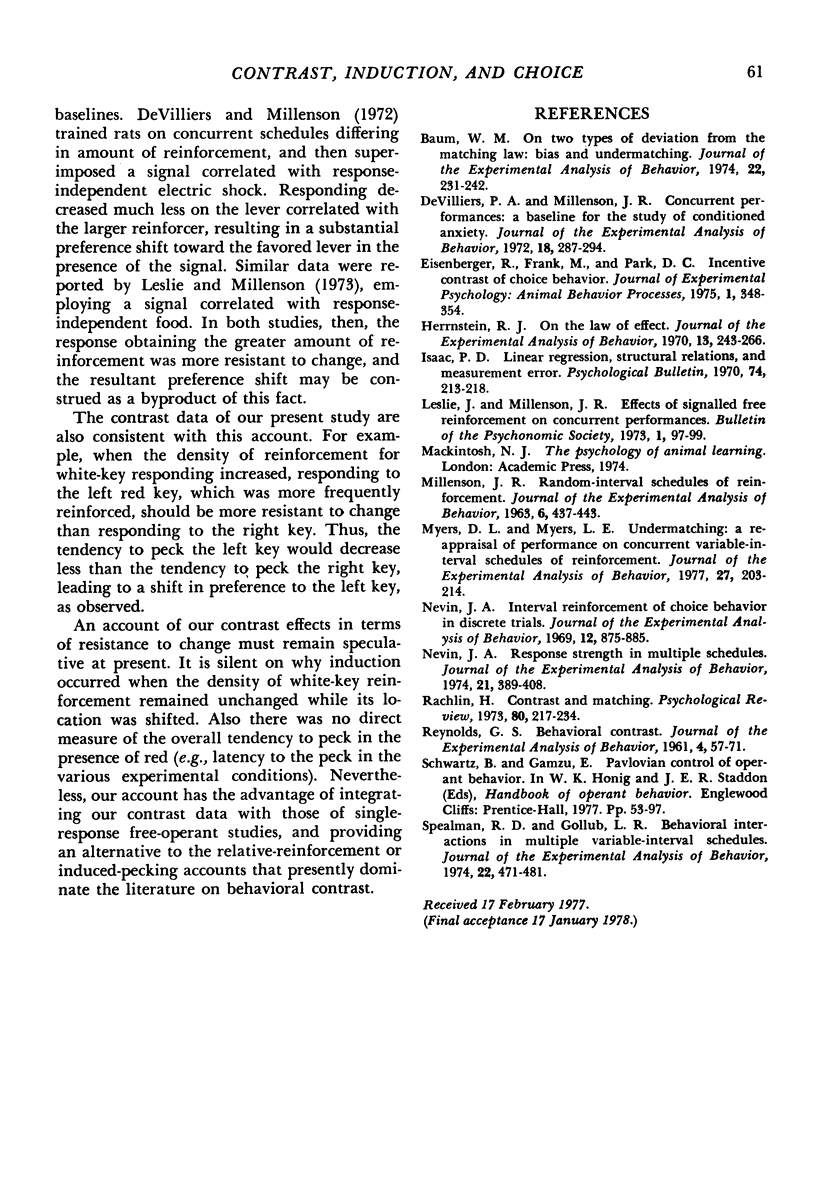
Selected References
These references are in PubMed. This may not be the complete list of references from this article.
- Baum W. M. On two types of deviation from the matching law: bias and undermatching. J Exp Anal Behav. 1974 Jul;22(1):231–242. doi: 10.1901/jeab.1974.22-231. [DOI] [PMC free article] [PubMed] [Google Scholar]
- De Villiers P. A., Millenson J. R. Concurrent performances: a baseline for the study of conditioned anxiety. J Exp Anal Behav. 1972 Sep;18(2):287–294. doi: 10.1901/jeab.1972.18-287. [DOI] [PMC free article] [PubMed] [Google Scholar]
- Herrnstein R. J. On the law of effect. J Exp Anal Behav. 1970 Mar;13(2):243–266. doi: 10.1901/jeab.1970.13-243. [DOI] [PMC free article] [PubMed] [Google Scholar]
- Millenson J. R. Random interval schedules of reinforcement. J Exp Anal Behav. 1963 Jul;6(3):437–443. doi: 10.1901/jeab.1963.6-437. [DOI] [PMC free article] [PubMed] [Google Scholar]
- Myers D. L., Myers L. E. Undermatching: a reappraisal of performance on concurrent variable-interval schedules of reinforcement. J Exp Anal Behav. 1977 Jan;27(1):203–214. doi: 10.1901/jeab.1977.27-203. [DOI] [PMC free article] [PubMed] [Google Scholar]
- Nevin J. A. Interval reinforcement of choice behavior in discrete trials. J Exp Anal Behav. 1969 Nov;12(6):875–885. doi: 10.1901/jeab.1969.12-875. [DOI] [PMC free article] [PubMed] [Google Scholar]
- Nevin J. A. Response strength in multiple schedules. J Exp Anal Behav. 1974 May;21(3):389–408. doi: 10.1901/jeab.1974.21-389. [DOI] [PMC free article] [PubMed] [Google Scholar]
- REYNOLDS G. S. Behavioral contrast. J Exp Anal Behav. 1961 Jan;4:57–71. doi: 10.1901/jeab.1961.4-57. [DOI] [PMC free article] [PubMed] [Google Scholar]
- Spealman R. D., Gollub L. R. Behavioral interactions in multiple variable-interval schedules. J Exp Anal Behav. 1974 Nov;22(3):471–481. doi: 10.1901/jeab.1974.22-471. [DOI] [PMC free article] [PubMed] [Google Scholar]


